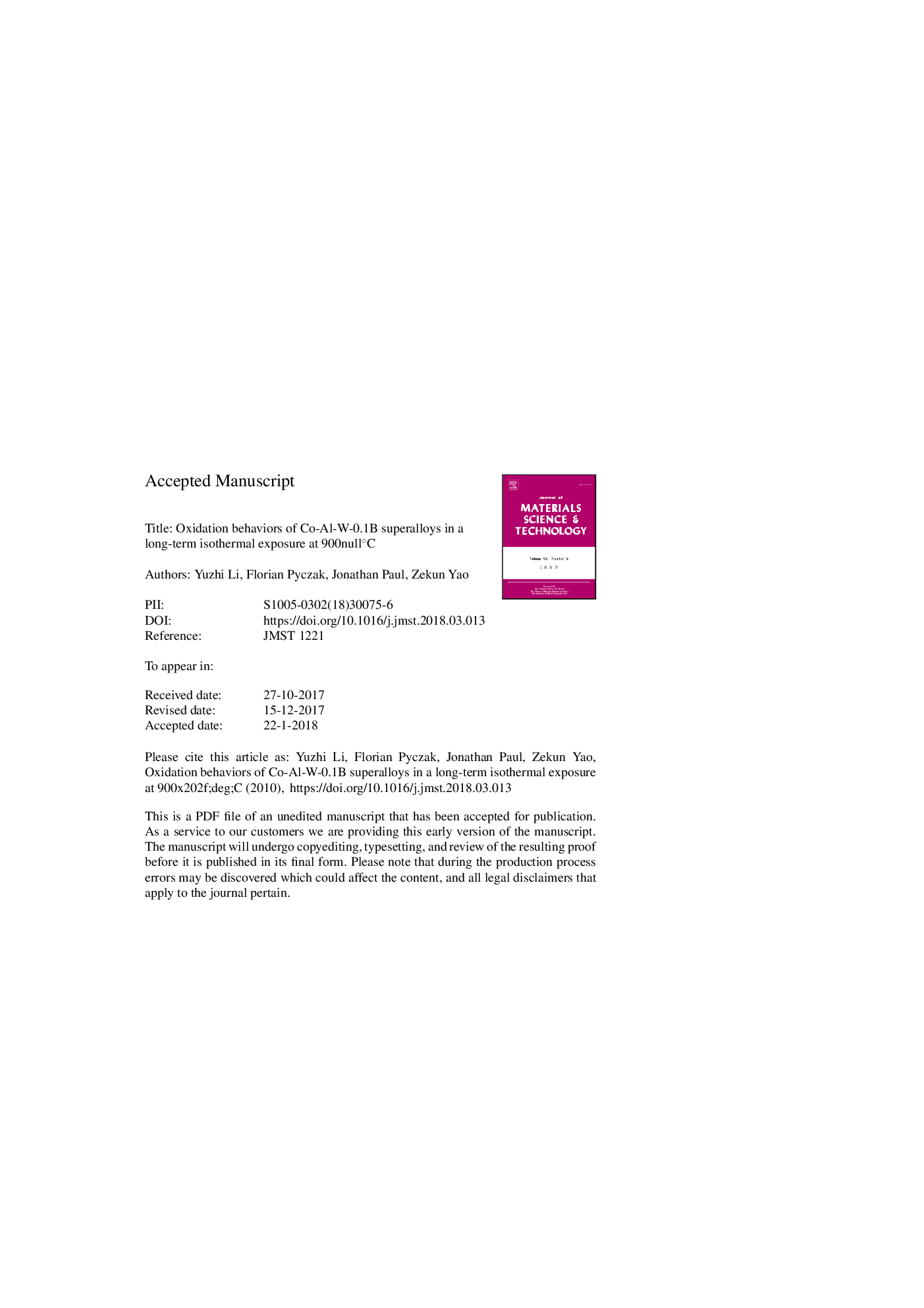| Article ID | Journal | Published Year | Pages | File Type |
|---|---|---|---|---|
| 7951854 | Journal of Materials Science & Technology | 2018 | 16 Pages |
Abstract
Co-Al-W-0.1B superalloys have been isothermally oxidized at 900 °C for 1000, 5000 and 10000 h in order to investigate their oxidation behaviors. The oxide layers and morphologies were characterized by X-ray diffraction and scanning electron microscopy combined with energy-dispersive spectroscopy. After 1000 h exposure, a Co3W/γ zone, an Al2O3 layer, a mixture of Co, Al, W oxides layer and a CoO layer are established on the substrate alloys. After extended oxidation, a discontinuous Al2O3 layer in Co-9Al-8W-0.1B and Co-9Al-9W-0.1B alloys leads to an additional mixed oxide layer on the substrate instead of the Co3W/γ zone. The oxide layers that form on the Co-9Al-8W-0.1B and Co-9Al-9W-0.1B alloys are much thicker than those on the Co-9Al-11W-0.1B alloy, and continuously thicken during oxidation. The higher content of W is beneficial to improving the oxidation resistance as it facilitates a faster formation of Co3W as well as Al2O3.
Keywords
Related Topics
Physical Sciences and Engineering
Materials Science
Materials Chemistry
Authors
Yuzhi Li, Florian Pyczak, Jonathan Paul, Zekun Yao,
